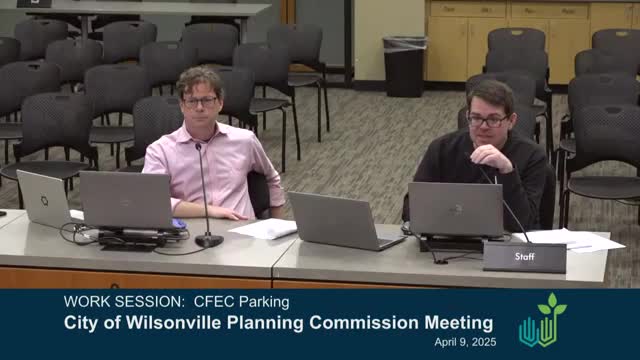Oregon Council debates balance between trees and solar in parking lot regulations
April 10, 2025 | Wilsonville, Clackamas County, Oregon
Thanks to Scribe from Workplace AI , all articles about Oregon are free for you to enjoy throughout 2025!

This article was created by AI using a video recording of the meeting. It summarizes the key points discussed, but for full details and context, please refer to the video of the full meeting. Link to Full Meeting
Commission members expressed a strong preference for trees over solar options, reflecting public sentiment that values the aesthetic and environmental benefits of greenery. However, the conversation highlighted the need for a structured approach to allow for solar installations when landscaping requirements are deemed unfeasible. The current code permits developers to opt for solar energy solutions if they cannot meet the landscaping standards, but the commission is considering whether to formalize this option further.

Before you scroll further...
Get access to the words and decisions of your elected officials for free!
Subscribe for FreeKey questions arose regarding the effectiveness of solar panels compared to trees in terms of climate benefits. While solar panels can generate electricity and reduce heat islands, trees provide essential carbon capture and shade. The commission is tasked with determining how to accommodate both needs effectively, ensuring that the city remains a "Tree City, USA" while also embracing renewable energy sources.
Another point of contention was the concept of a "fee in lieu," which would allow developers to pay a fee instead of planting trees or installing solar panels. Some commissioners expressed skepticism about this approach, arguing that simply paying a fee does not address the underlying environmental goals. They emphasized the importance of ensuring that any solar installations are integrated into parking lots rather than placed in less impactful locations, such as rooftops.
As the commission continues to refine its policies, the outcomes of these discussions will have significant implications for Wilsonville's landscape and sustainability efforts. The next steps will involve gathering more public feedback and potentially revising the code to better balance the needs for both solar energy and tree preservation, aligning with the community's broader environmental goals.
Converted from Planning Commission Meeting, April 9, 2025 meeting on April 10, 2025
Link to Full Meeting
Comments
View full meeting
This article is based on a recent meeting—watch the full video and explore the complete transcript for deeper insights into the discussion.
View full meeting




